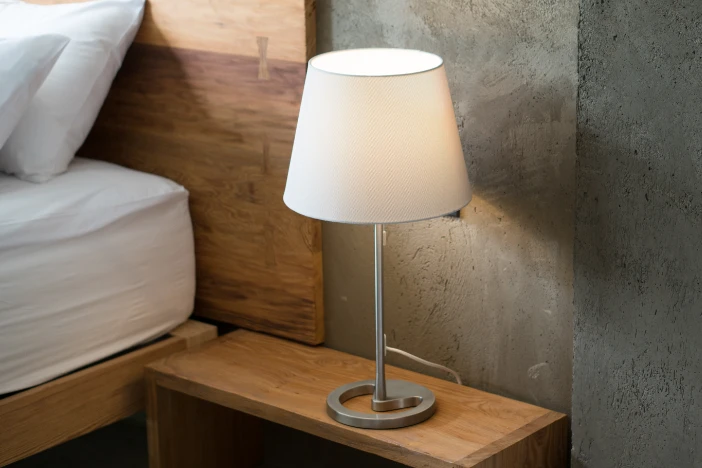
Table lamps – Setting your task and ambient lighting
These mid-sized lamps are the most common portable light used in homes today. Based on where they’re placed, table lamps can improve activity performance or simply enhance the ambiance of a room. Modern lamps of this variety may include USB charging for small electronic devices.
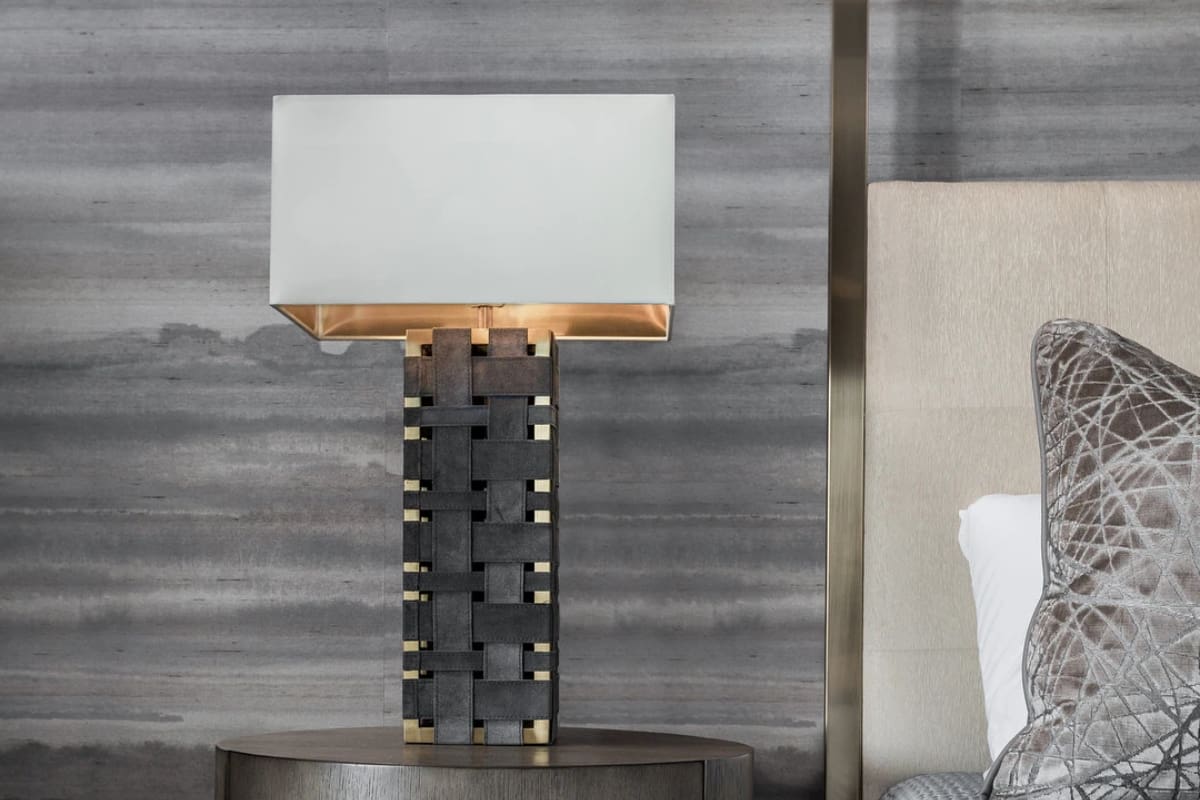
Accent lamps – Reinforcing design style
These lamps typically provide ambient light and make a personal statement of style. While functional, their primary purpose is often to reinforce the interior design theme of a room. They also add a whimsical decorative touch. Accent lamps have a wide variety of characteristics. Finding the right one depends on the aesthetics that matter most to you. They infuse a room with vibrant color, add curves and texture, or celebrate a theme that speaks to you.

Reading lamps – Lighting by the book
Have you ever moved a magazine closer or felt eye strain after finishing a chapter in your favorite novel? If so, it may be due to insufficient lighting (or you could just be getting old). Even in a decently lit room, it can be challenging to scan text. Reading lamps provide a brightly focused light and can adapt to changing conditions. Dimmers are valuable features in living room lamps if you read throughout the day or bedside lamps at night. They should also allow you to direct the light toward your reading material, regardless of height or book position.

Desk lamps – Adapting to your home work environment
Do you have a spacious partner’s desk or a small mobile workstation? Regardless, a great desk lamp is critical to lighting a home office. You perform many tasks at your desk: typing on a computer, paying bills, making to-do lists, etc. Your desk lamp must provide light for reading and be able to accommodate items across the tabletop. Most have tilting shades that redirect light onto paperwork across your desk or away from computer screens. Many have adjustable arms and necks that can rotate or extend to cover surface areas all over the desktop.

Varieties of desk lamps
Adjustable or swing arm lamp – This highly adaptable lamp can rotate and bend in multiple directions. It can swing upward or downward to direct light across a large area (think Pixar lamp logo).
Gooseneck lamp – The neck of this lamp is flexible (like a goose’s). This enables you to maneuver the light in virtually any direction.
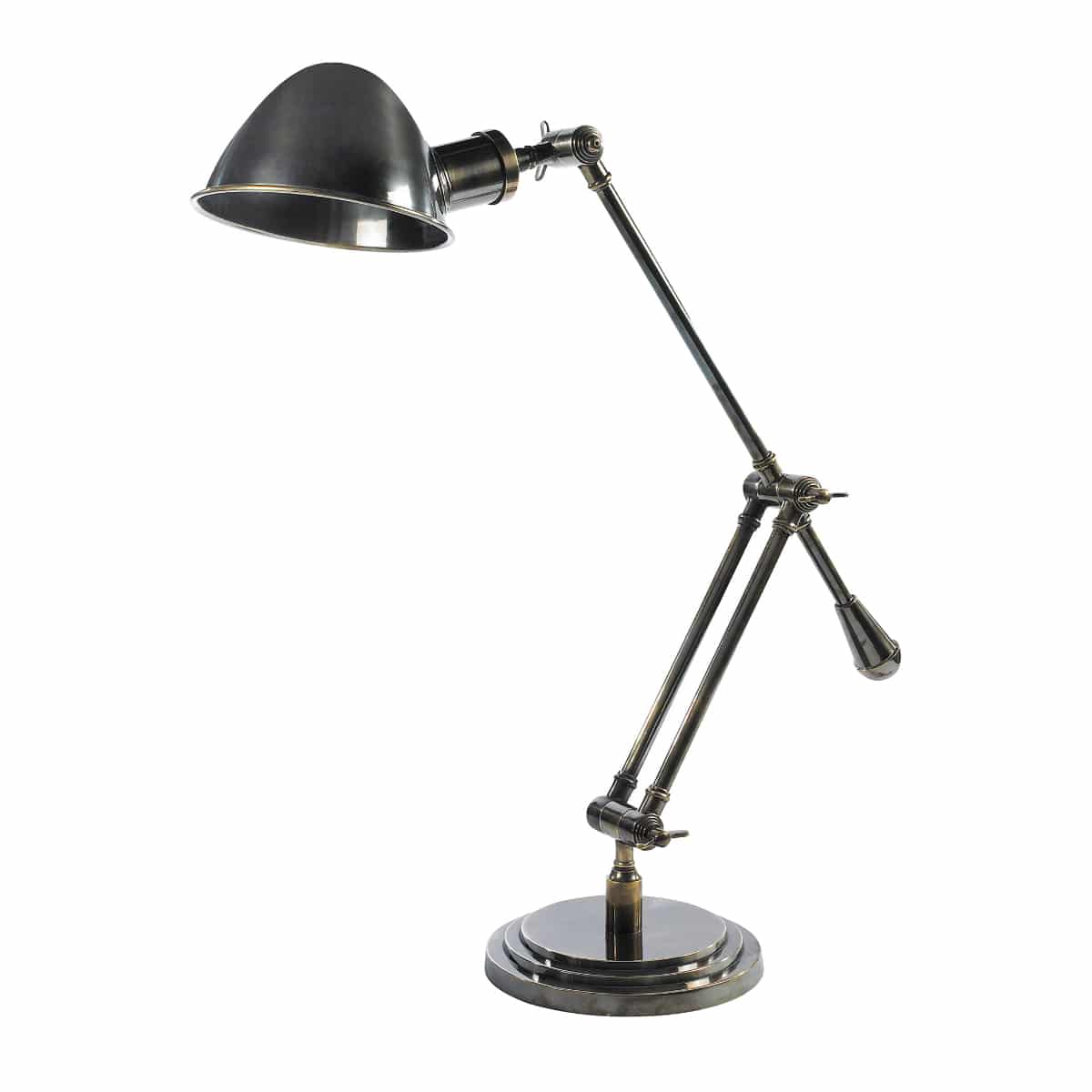
Clamp-on lamp – The base of this lamp has a large clip or vise-like mechanism. It slides and secures over the edge of the tabletop, vertical plane or post and can save desktop space.
Banker or piano lamp – This iconic light is recognized by its typically green glass horizontal cylinder shade. It has a pull chain and brass stand, which shines light downward.
Magnifier lamp – This specialized lamp incorporates a magnifying glass in the middle of the lighting fixture. It’s often used when precision assembly and inspection of small components is required.
Organizer lamp – The base of this lamp has storage compartments for post-it notes, pens and paperclips. There may even be room for smartphones and other electronic devices. It saves valuable desk space and keeps things organized.
Buffet lamps – Thin lights in the thick of things
If you host dinner parties and take pride in the presentation, buffet lamps are a great touch. They add elegance to your dining room and serve a practical purpose – helping people see what they’re about to eat. Typically, they’re used in pairs and placed on the ends of sideboards, consoles or other serving tables. Buffet lamps tend to be tall and thin. This helps to prevent the bases and shades from getting in the way of hands and arms. Usually, their light is softer and focused downward to create a welcoming ambiance and mood.
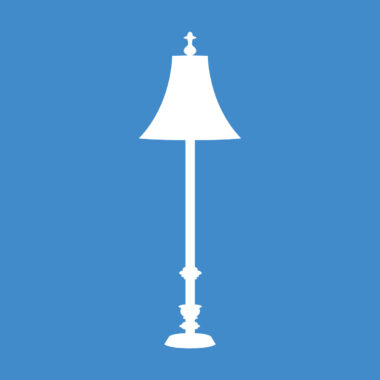
Additional things to consider when evaluating table lamps
Line of Sight – Height
The bottoms of table lamp shades must be roughly at eye level when you’re seated. This is true whether in an office chair, sofa or bed. This enables you to work, read or socialize with others without the glare of an exposed light bulb blinding you. At the same time, the direct light is close enough to adequately illuminate the pages of a book.
Relative Proportion – Size
Table lamps should be no more than 1 ½ times the height of the furnishing it sits on. The shade should never overlap the edge of the tabletop. Measure the height and circumference of your table, rather than rely on eyeball guesses. It’s better to be safe than sorry. Conversely, your table should not dwarf your lamp either. For end tables, the diameter of the shade should be at least half the width of the table. Long consoles and sideboards can work with smaller lamps if used in pairs. This creates a pleasing visual symmetry. Desk lamp size should vary based on the size of the desk. However, the functional benefits are usually more important than the aesthetics.
Traffic Flow & Activity – Weight
If your room has a heavy traffic flow (i.e. people frequently walk through it), you need to be sure that your table lamps are stable and don’t tip over easily. Height plays a part, but the weight and base design are probably more important factors. Similarly, if you expect to be active on or around a table or desk, the heavier the lamp the better.
A table lamp isn’t your only option
Table lamps are easily the most popular type of lamp but others provide unique lighting benefits. The next section of our guide reviews the characteristics of floor lamps and identifies when they are a solid choice.


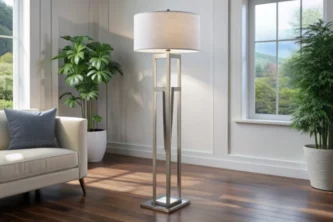
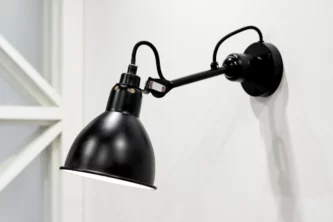
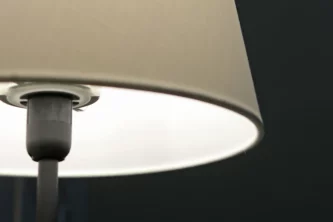
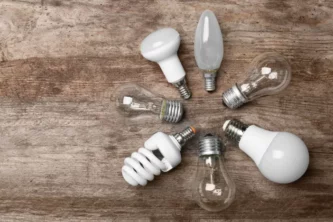




Leave a Reply